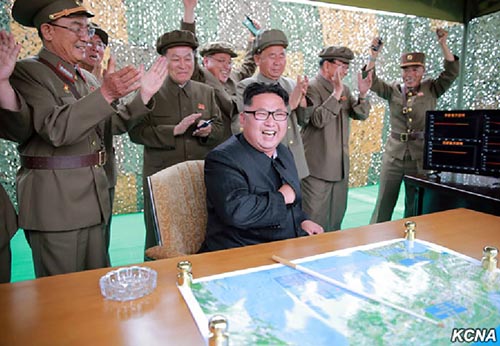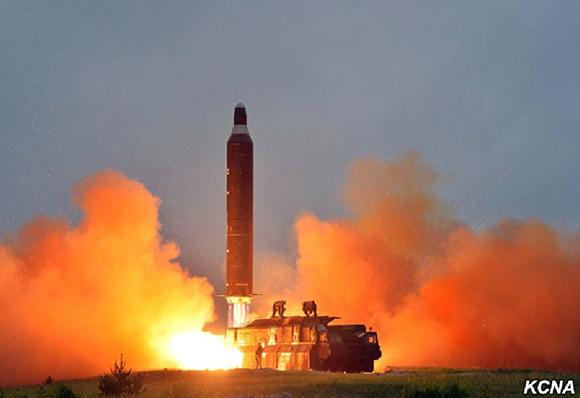48 hours before he signed the nuclear deal, Iran tested a new ballistic missile based on North Korean technology. The missile, which exploded during the boost phase, was launched on July 11 last year, near the city of Saman, west of Isfahan.
The American secret services would monitor the test, but ignore which system was actually launched. Strong indications would point to the Iranian version of the BM-25 Musudan of North Korea. If so, its range of 2500 miles would allow it to hit US forces in the Middle East and Israel. It would be the fourth known attempt, for a ballistic missile launched by Iran, after the signing of the agreements.
It should be noted that while on the one hand nuclear agreements do not mention ballistic missiles, on the other they are expressly prohibited by UN resolution 2231. Considering the parallel development in both Korea and Iran, it may have been launched as a modified version of the Musudan. We know that the June 22 North Korea successfully launched an intermediate-range ballistic missile Musudan. The carrier, after five previous failed attempts, crashed into the Sea of Japan, after traveling an estimated distance of 400 / 450 km and reached an altitude of over 1000 km. The launches took place from the east coast of the country, in the eastern port city of Wonsan.
Despite international condemnation and harsh UN sanctions, the North has never given up its nuclear ambitions. The Strategic Command confirmed the final trajectory of the Musudan in the Sea of Japan. North Korea, in an official statement, declares a quota reached by 1,413.6km.
Pyongyang has also published the first photographs of the missile Hwasong-10 (admitted that they are authentic). The "Musudan" in question would seem to be longer than the mock-up shown in the 2010 on parade. Probably almost three meters longer than the standard R-27 missile, it should have an extra capacity of almost four tons more fuel and, consequently, greater range. If so it would have a maximum range of 3000 km.
In the photos taken from Pyongyang, we note particular precautions to the initial design of the Musudan, probably carried out to give greater aerodynamic stability during the pushing phase. The Hwasong-10 it should be propelled by the 4d10 engine, originally designed and built for Soviet R-27s, for a greater boost than Scud and Nodong missiles.

Other tests in different conditions and trajectories will be necessary before validating the system and considering it a strategic and reliable weapon, but the progress achieved to date by North Korea is undeniable. The system optimization should take another two years and at least four launches.
The ballistic missile Musudan (Hwasong-10) also known as Rodong-B or BM-25 is the land-based copy of the Soviet SS-N-6 system Serb (R-27) which equipped class submarines during the cold war Yankee. He was struck down by the Russians in the nineties: he was able to carry a single nuclear warhead from 1-1,2 Mt.
According to a rough estimate, the North would have built up to 50 missiles Musudan edited. Regardless of the success of the test, North Korea would have succeeded in developing more powerful and efficient propulsion systems than those used in the past for missiles. Nodong e Scud. These skills could confer the know-how necessary for the realization of an intercontinental ballistic vector, like the KN-08 and KN-14. To develop an intercontinental ballistic missile, Pyongyang has yet to prove that it has acquired the return technology and managed to miniaturize a nuclear warhead.
An intercontinental ballistic missile, after the propulsion and thrust phase, reaches the Earth's orbit to release the main re-entry vehicle, the tip of the missile. The latter, once positioned via inertial navigation, releases the warheads that hit the targets returning from the Earth's atmosphere. In reality, the technology of long-range rockets and intercontinental ballistic missiles is basically the same. Both differ only in the "payload". The rocket Unha-3, for example, is an evolution of the ICBM Taepodong-2. The miniaturization process, on the other hand, has never been independently verified by the West and there is no evidence of the standardization of nuclear warheads for transport on intercontinental carriers.
Then there is a third factor that constrains Pyongyang, determined by the type of propellant used. North Korea still uses the liquid propellant for its vectors: technology, the latter now considered "obsolete" by all the nuclear powers of the planet.












